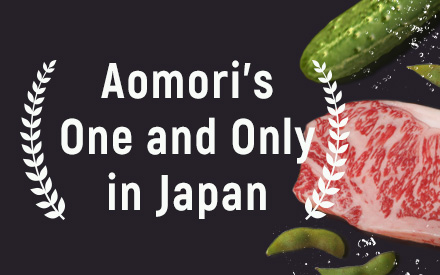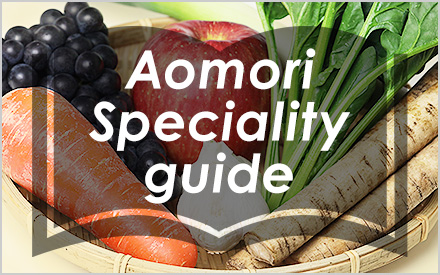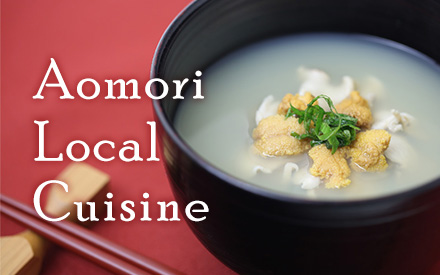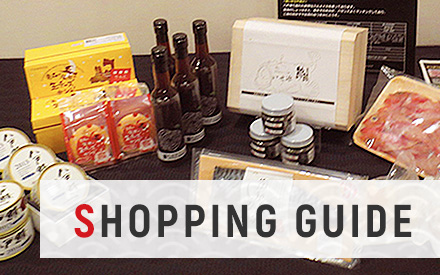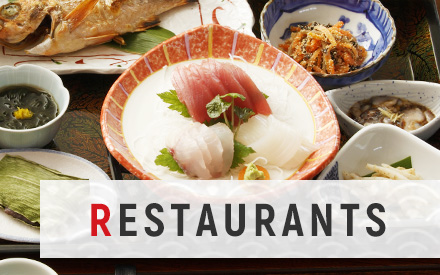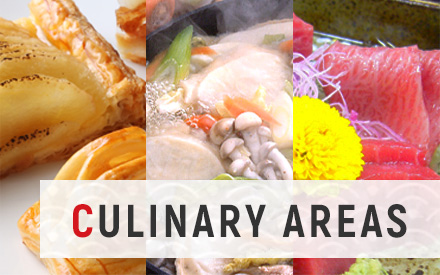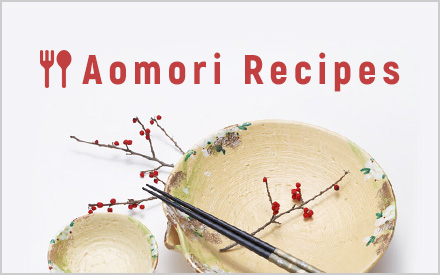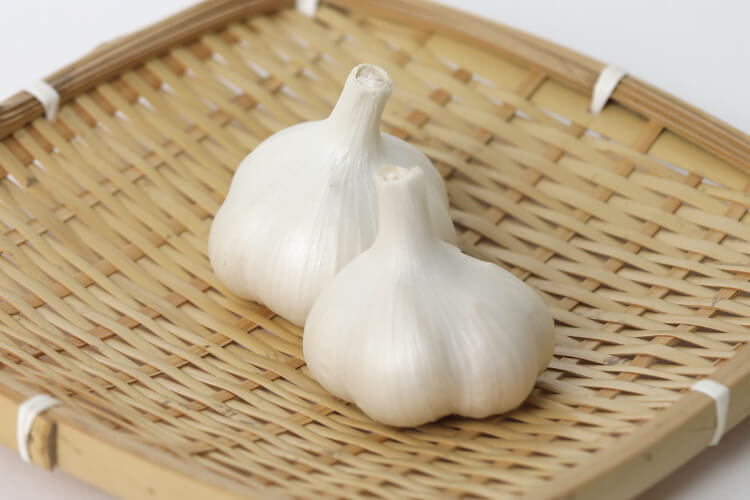
Accounting for 70% of the country’s market share, Aomori is the largest producer of garlic in Japan. Aomori garlic is known for its large and firm cloves and snowy white color.
The cultivar produced is “Fukuchi White”, a variety well-suited to the climate in Aomori. It is highly regarded in the market for its sweetness and minimal spiciness.
Nutritional Value of Garlic
The unique pungent aroma of garlic derives from allicin, a substance with a sterilizing effect. It is also believed that garlic is effective in preventing arterial sclerosis and in fatigue recovery as allicin binds with vitamin B1. However, overeating garlic can have potential adverse effects. Ideal consumption is about 2 to 3 cloves a day.
How to Choose Garlic
- The outer skin should be dry and shiny
- The stem should be firm
- Cloves should be plump and firm
Preservation and Cooking Methods
To preserve garlic, place it in a net and hang it in an airy place or wrap in plastic and refrigerate or freeze. Garlic is most commonly used to add flavor to dishes, but it is also delectable to be eaten deep-fried by itself.
Main Production Regions
| Chunan Region | Hirakawa, Kuroishi, Fujisaki, Inakadate |
|---|---|
| Sanpachi Region | Hachinohe, Takko, Gonohe, Nanbu, Sannohe, Shingo, Hashikami |
| Seihoku Region | Tsugaru, Itayanagi |
| Kamikita Region | Towada, Shichinohe, Tohoku, Rokkasho, Misawa, Rokunohe, Oirase |
Distribution Season
in season (Harvest June-July)
| Jan | Feb | Mar | Apr | May | Jun | Jul | Aug | Sep | Oct | Nov | Dec |
|---|---|---|---|---|---|---|---|---|---|---|---|
Find a restaurant or store
Depending on the season and weather, this product may not be available.
Takko Garlic
Aomori is the largest garlic producer in Japan.
The southernmost town in Aomori, Takko, is the leader in the advancement of garlic production and a major production area in the prefecture.
“Takko Garlic” is larger than average, with greater and firmer cloves, a snow white color, and well-known high quality. The strain is called Fukuchi White which has six cloves in a bulb. Utmost care goes into quality control, with high standards for cultivation and shipping. In 2006, Takko garlic was the first produce to become a regional collective trademark* in Tohoku region.
Each garlic is inspected and packaged individually to ensure the quality of every product.
In Takko, local cuisine uses the local garlic in such dishes as “Takko Garlic Steak Gohan” (nicknamed as Takko Gari-sute Gohan). The main ingredients, which are garlic, meat, and rice, are all produced in Takko. Other popular local dishes are Takko Cola (Takko Garlic Cola), garlic appetizers, meat-rolled sushi, and garlic ice cream, which are often served in combination for full-course lunch meals.
*Regional collective trademark – A system developed to promote regional brands through official trademark registration of regional and product names. The system is set up to protect regional brands, establish trust and competitive power for the growth of local economies.

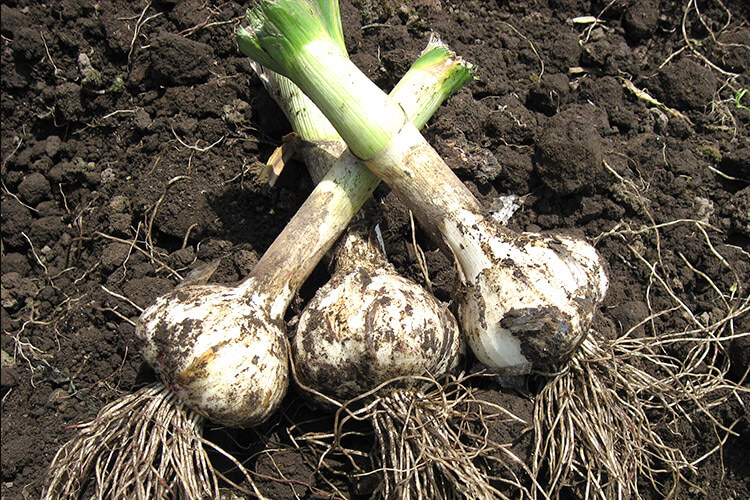
Black Garlic
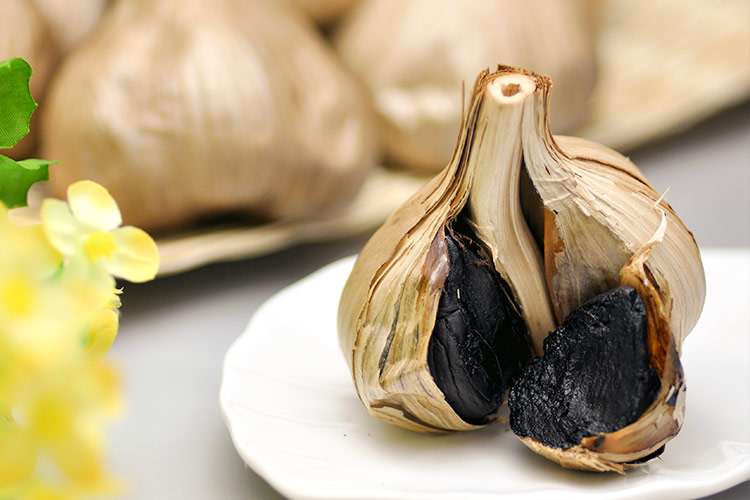
Aomori black garlic has attracted considerable attention from professional chefs in recent years. It is currently exported to 25 countries including the United States as well as Hong Kong, with increasing exposure at international trade fairs.
Aomori black garlic is 100% made of quality white garlic grown in Aomori prefecture, without additives or artificial coloring.
White garlic is aged and fermented for three to four weeks under the right temperature and humidity to change into black garlic. The change in color is caused by the Maillard reaction (a chemical reaction between an amino acid and sugar) similar to that in chocolate. After aging and fermentation, the sugar content in the garlic increases, giving the garlic a texture of dried fruits and sweet-sour flavor. In addition, black garlic is easier to eat for children and the elderly as it does not have the same peculiar smell and irritating effect.
It is commonly eaten as-is, mixed in confectionaries, and used as a secret ingredient in many dishes.


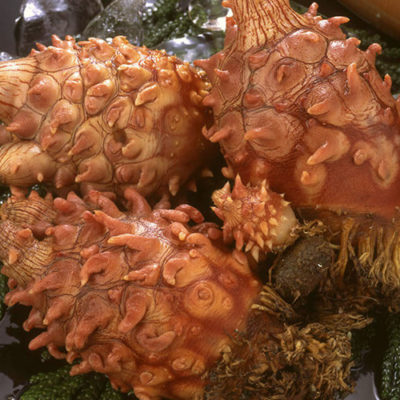 Sea Pineapple
Sea Pineapple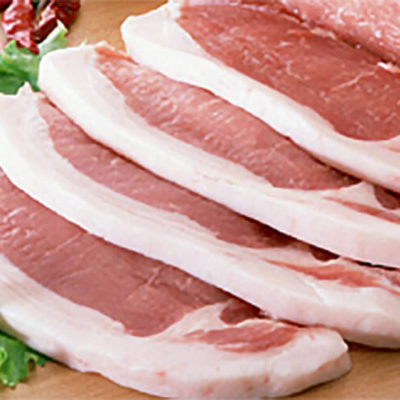 Pork
Pork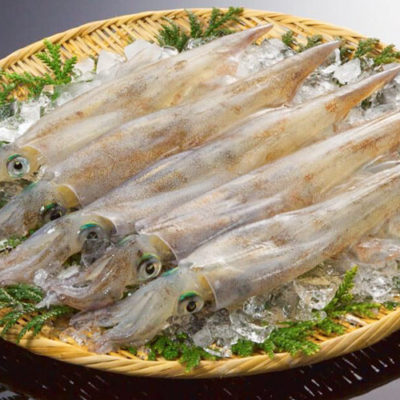 Squid
Squid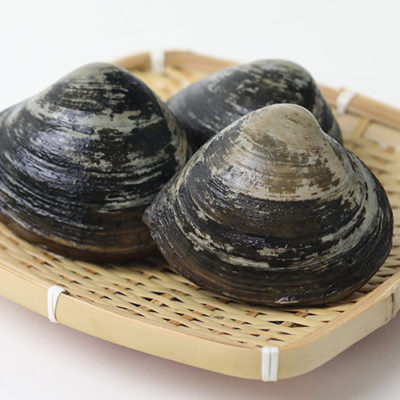 Surf Clam
Surf Clam
